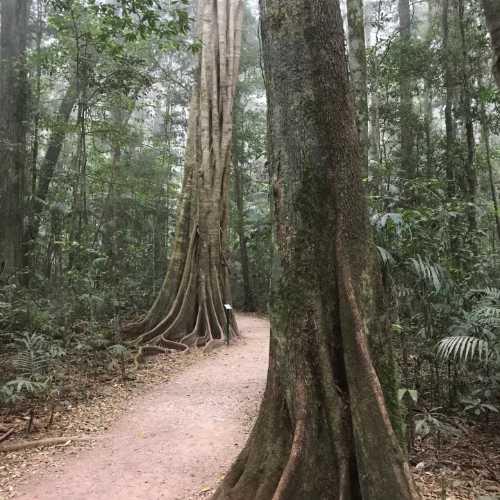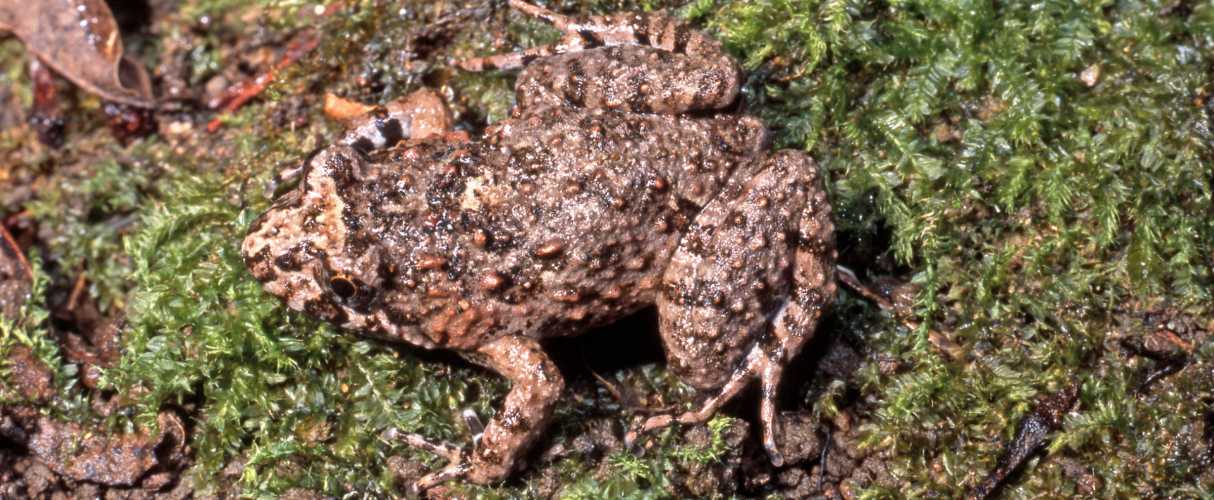The tusked frog is the only Australian species where female is smaller than male. The male grows to 5cm and has an enlarged head.
The tusked frog gets it’s name from two jutting ‘teeth’ on the lower jaw, only visible when the mouth is open. Male frogs have been observed locking jaws together in frog fights.
The tusked frog’s back is dark-brown or dark-grey and appears rough or warty. It’s belly is marbled black and white. The tusked frog has a unique butterfly-shaped colouration between the eyes and bright red patches can be seen on the legs.
Tusked frogs breed during spring and summer. A foamy mass of eggs is laid in shaded ponds and stream pools. Over 600 eggs can be in one nesting site and the male frogs guards his developing offspring. The tadpoles take 2 months to develop.
This species is classed as vulnerable in Queensland. Urban and agricultural development has caused significant habitat loss. The fungal disease Chytridiomycosis is thought to also be a threat to the tusked frog, as it is many other amphibians. We recommend washing your boots prior to walking in the rainforest to prevent the spread of fungal diseases such as chytrid.
Listen when you’re near the pond or creek at Mary Cairncross Scenic Reserve. You may hear the single “tok” or “cluck” sound of a tusked frog.
Not sure if you the species you heard was a tusked frog? Download the Australian Museum frog identification app to find out.
Meet other frogs who live here


Get to know our local frogs.
